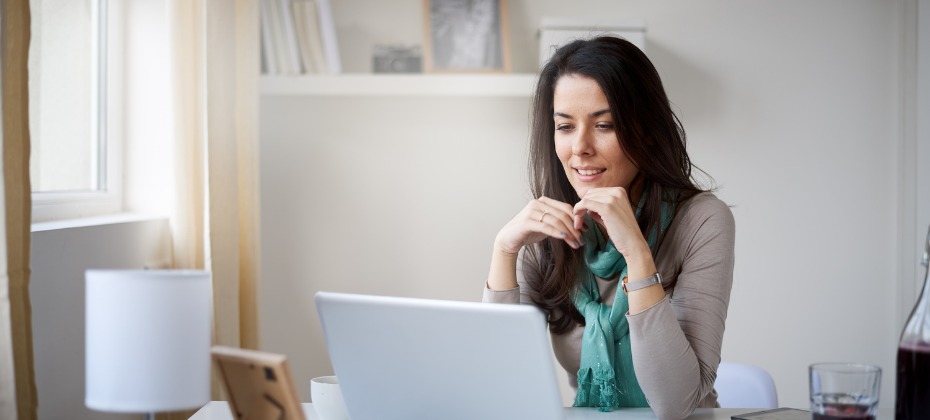Tag: data

Reporting positive rental payment histories to credit bureaus has been in the news more than once in recent months. In early November, Freddie Mac announced it will provide closing cost credits on multifamily loans for owners of apartment properties who agree to report on-time rental payments. In July, California began requiring multifamily properties that receive federal, state or local subsidies to offer each resident in a subsidized apartment home the option of having their rental payments reported to a major credit bureau. And while reporting positive rental payments to credit bureaus may not yet be part of the multifamily mainstream, forward-thinking operators have already been doing it for years. Below is a quick primer on this practice and its benefits. Why do renters need this service? A strong, positive credit history is critical to securing car loans, credit cards and mortgages – and doing so at favorable interest rates. Unfortunately, unlike homeowners, apartment residents traditionally have not seen a positive impact on their credit reports for making their rent payments on time and in full, even though these payments can be very large and usually make up their largest monthly expense. In fact, renters are seven times more likely to be credit invisible – meaning they lack enough credit history to generate a credit score – than homeowners, according to the Credit Builders Alliance (CBA). This especially impacts lower-income households and communities of color. Renters make up approximately 60% of the U.S. households that make less than $25,000 a year, while Black and Hispanic households are twice as likely as White households to rent, according to the CBA. Experian is among the organizations working with the Consumer Data Industry Association (CDIA) on the association's Rental Empowerment Project. Through the REP, CDIA and its partner organizations seek to increase the reporting of rental payment history information by landlords and property managers through the development and adoption of a uniform, universal data reporting format for landlords and property managers to use. How does reporting positive rental payments to credit bureaus have an impact on a resident's credit history? The impact on any individual renter will obviously vary because of a wide array of factors. But to get some sense of the potential impact reporting on-time rental payments can have, consider the results of the CBA's Power of Rent Reporting pilot. In that test, 100% of renters who started off with no credit score became scorable at the near prime or prime level. In addition, residents with subprime scores saw their score increase by an average of 32 points. How does reporting positive rent payments benefit rental-housing owners and operators? Reporting positive rental payments provides residents with a powerful incentive to pay their rent on time and in full. And because there’s not a huge percentage of apartment communities currently doing this, helping residents build their credit history in this manner can offer a real competitive advantage. Learn more

It’s time for organizations to harness the power artificial intelligence (AI) can bring to digital identity management – quickly and accurately identifying consumers throughout the lifecycle. The rise in crime The acceleration to digital platforms created a perfect storm of new opportunities for fraudsters. Synthetic identity fraud, stimulus-related fraud, and other types of cybercrime have seen huge upticks within the past year and a half. In fact, the Federal Trade Commission revealed that consumers reported over 360,000 complaints, resulting in more than $580 million in COVID-19-related fraud losses as of October 2021. To protect both themselves and consumers, businesses — especially lenders — will have to find and incorporate new strategies to identify customers, deter fraudsters and mitigate cybercrime. The benefits of AI for digital identity In our latest e-book, we explore the impacts of AI on organizations’ digital identity strategies, including: How changing consumer expectations increased the need for speed The challenges associated with both AI and digital identities The path forward for digital identity and AI How to develop the right strategy Building a solution It’s clear that current digital identity and fraud prevention tools are not enough to stop cybercriminals. To stay ahead of fraudsters and keep consumers happy, businesses need to look to new technologies — ones that can intake and compute large data sets in near-real time for better and faster decisions throughout the customer lifecycle. By using AI, businesses will enjoy a fast and consistent decisioning system that automatically routes questionable identities to additional authentication steps, allowing employees to focus on the riskiest cases and maximizing efficiency. Read our latest e-book to dive into the ways artificial intelligence and digital identity interact, and the benefits a clear identity strategy can have for the entire user journey. Download the e-book

In Experian’s Automotive Market Trends Review: Q2 2021, we looked at the data to better understand EV and internal combustion engine registration trends.

Experian recently announced that it has made the IDC 2021 Fintech Rankings Top 100, highlighting the best global providers of financial technology. Experian is ranked number 11, rising 33 places from its 2020 ranking. IDC also refers to Experian as a ‘rising star.’ The robust data assets of Experian, combined with best-in-class modeling, decisioning and technology are powering new and innovative solutions. Experian has invested heavily in new technologies and infrastructures to deliver the freshest insights at the right time, to make the best decision. For example, Experian's Ascend Intelligence Services™ provides data, analytics, strategy, and performance monitoring, delivered on a modern-tech AI platform. With the investment in Ascend Intelligence Services, Experian has been able to streamline the delivery speed of analytical solutions to clients, improve decision automation rates and increase approval rates, in some cases by double digits. “Recognition in the top 20 of IDC FinTech Rankings demonstrates Experian’s commitment to the success of its financial clients,” said Marc DeCastro, research director at IDC Financial Insights. “We congratulate Experian for being ranked 11th in the 2021 IDC FinTech Rankings Top 100 list.” View the IDC Fintech Rankings list in its entirety here. Focus on Data, Advanced Analytics and Decisioning Creates Winning Strategy for Experian Experian’s focus on data, advanced analytics and decisioning has continued to gain recognition from various notable programs that acknowledge Fintech industry leaders and breakthrough technologies worldwide. Beyond the IDC Fintech Rankings Top 100, Experian won honors from the 2021 FinTech Breakthrough Awards, the 2021 CIO 100 Awards and was most recently shortlisted in the CeFPro Global Fintech Leaders List for 2022 in the categories of advanced analytics, anti-fraud, credit risk and core banking/back-end system technologies. “At Experian, we are committed to supporting the Fintech community. It’s great to see our continued efforts and investments driving positive impacts for our clients and their consumers. We will continue to invest and innovate to help our clients solve problems, create opportunities and support their customer-first missions,” said Jon Bailey, Vice President for Fintech at Experian. Learn more about how Experian can help advance your business goals with our Fintech Solutions and Ascend Intelligence Services. Explore fintech solutions Learn more about AIS

The collections landscape is changing as a result of new and upcoming legislation and increased expectations from consumers. Because of this, businesses are looking to create more effective, consumer-focused collections processes while remaining within regulatory guidelines. Our latest tip sheet has insights that can help businesses and agencies optimize their collections efforts and remain compliant, including: Start with the best data Keep pace with changing regulations Focus on agility Pick the right partner Download the tip sheet to learn how to maximize your collections efforts while reducing costs, avoiding reputational damage and fines, and improving overall engagement. Download tip sheet

Lately, I’ve been surprised by the emphasis that some fraud prevention practitioners still place on manual fraud reviews and treatment. With the market’s intense focus on real-time decisions and customer experience, it seems that fraud processing isn’t always keeping up with the trends. I’ve been involved in several lively discussions on this topic. On one side of the argument sit the analytical experts who are incredibly good at distilling mountains of detailed information into the most accurate fraud risk prediction possible. Their work is intended to relieve users from the burden of scrutinizing all of that data. On the other side of the argument sits the human side of the debate. Their position is that only a human being is able to balance the complexity of judging risk with the sensitivity of handling a potential customer. All of this has led me to consider the pros and cons of manual fraud reviews. The Pros of Manual Review When we consider the requirements for review, it certainly seems that there could be a strong case for using a manual process rather than artificial intelligence. Human beings can bring knowledge and experience that is outside of the data that an analytical decision can see. Knowing what type of product or service the customer is asking for and whether or not it’s attractive to criminals leaps to mind. Or perhaps the customer is part of a small community where they’re known to the institution through other types of relationships—like a credit union with a community- or employer-based field of membership. In cases like these, there are valuable insights that come from the reviewer’s knowledge of the world outside of the data that’s available for analytics. The Cons of Manual Review When we look at the cons of manual fraud review, there’s a lot to consider. First, the costs can be high. This goes beyond the dollars paid to people who handle the review to the good customers that are lost because of delays and friction that occurs as part of the review process. In a past webinar, we asked approximately 150 practitioners how often an application flagged for identity discrepancies resulted in that application being abandoned. Half of the audience indicated that more than 50% of those customers were lost. Another 30% didn’t know what the impact was. Those potentially good customers were lost because the manual review process took too long. Additionally, the results are subjective. Two reviewers with different levels of skill and expertise could look at the same information and choose a different course of action or make a different decision. A single reviewer can be inconsistent, too—especially if they’re expected to meet productivity measures. Finally, manual fraud review doesn’t support policy development. In another webinar earlier this year, a fraud prevention practitioner mentioned that her organization’s past reliance on manual review left them unable to review fraud cases and figure out how the criminals were able to succeed. Her organization simply couldn’t recreate the reviewer’s thought process and find the mistake that lead to a fraud loss. To Review or Not to Review? With compelling arguments on both sides, what is the best practice for manually reviewing cases of fraud risk? Hopefully, the following list will help: DO: Get comfortable with what analytics tell you. Analytics divide events into groups that share a measurable level of fraud risk. Use the analytics to define different tiers of risk and assign each tier to a set of next steps. Start simple, breaking the accounts that need scrutiny into high, medium and low risk groups. Perhaps the high risk group includes one instance of fraud out of every five cases. Have a plan for how these will be handled. You might require additional identity documentation that would be hard for a criminal to falsify or some other action. Another group might include one instance in every 20 cases. A less burdensome treatment can be used here – like a one-time-passcode (OTP) sent to a confirmed mobile number. Any cases that remain unverified might then be asked for the same verification you used on the high-risk group. DON’T: Rely on a single analytical score threshold or risk indicator to create one giant pile of work that has to be sorted out manually. This approach usually results in a poor experience for a large number of customers, and a strong possibility that the next steps are not aligned to the level of risk. DO: Reserve manual review for situations where the reviewer can bring some new information or knowledge to the cases they review. DON’T: Use the same underlying data that generated the analytics as the basis of a review. Consider two simplistic cases that use a new address with no past association to the individual. In one case, there are several other people with different surnames that have recently been using the same address. In the other, there are only two, and they share the same surname. In the best possible case, the reviewer recognizes how the other information affects the risk, and they duplicate what the analytics have already done – flagging the first application as suspicious. In other cases, connections will be missed, resulting in a costly mistake. In real situations, automated reviews are able to compare each piece of information to thousands of others, making it more likely that second-guessing the analytics using the same data will be problematic. DO: Focus your most experienced and talented reviewers on creating fraud strategies. The best way to use their time and skill is to create a cycle where risk groups are defined (using analytics), a verification treatment is prescribed and used consistently, and the results are measured. With this approach, the outcome of every case is the result of deliberate action. When fraud occurs, it’s either because the case was miscategorized and received treatment that was too easy to discourage the criminal—or it was categorized correctly and the treatment wasn’t challenging enough. Gaining Value While there is a middle ground where manual review and skill can be a force-multiplier for strong analytics, my sense is that many organizations aren’t getting the best value from their most talented fraud practitioners. To improve this, businesses can start by understanding how analytics can help group customers based on levels of risk—not just one group but a few—where the number of good vs. fraudulent cases are understood. Decide how you want to handle each of those groups and reserve challenging treatments for the riskiest groups while applying easier treatments when the number of good customers per fraud attempt is very high. Set up a consistent waterfall process where customers either successfully verify, cascade to a more challenging treatment, or abandon the process. Focus your manual efforts on monitoring the process you’ve put in place. Start collecting data that shows you how both good and bad cases flow through the process. Know what types of challenges the bad guys are outsmarting so you can route them to challenges that they won’t beat so easily. Most importantly, have a plan and be consistent. Be sure to keep an eye out for a new post where we’ll talk about how this analytical approach can also help you grow your business. Contact us

For credit unions, having the right income and employment verification tools in place helps to create an application process that is easy and low friction for both new and existing members. Digital first is member first The digital evolution created an expectation for online experiences that are simple, fast, and convenient. Attracting and building trusted, loyal relationships and paving the way for new revenue-generating opportunities now hinges on a lender's ability to provide experiences that meet those expectations. At the same time, market volatility and economic uncertainty are driving catalysts behind the need for credit unions to gain a more holistic view of a member’s financial stability. To gain a competitive advantage in today’s lending environment, credit unions need income and employment verification solutions that balance two often polarizing business drivers: member experience and risk management. While verified income and employment data is key to understanding stability, it’s equally important to streamline the verification process and make it as frictionless as possible for borrowers. With these things in mind, here are three considerations to help credit unions ensure their income and employment verification process creates a favorable member experience. The more payroll records, the better Eliminate friction for members by tapping into a network of millions of unique employer payroll records. Gaining instant access into a database of this scale helps enable decisions in real-time, eliminates the cost and complexity of many existing verification processes, and allows members to skip cumbersome steps like producing paystubs. Create a process with high configuration and flexibility Verification is not a one-size-fits-all process. In some cases, it might be advantageous to tailor a verification process. Make sure your program is flexible, scalable and highly configurable to meet your evolving business needs. It should also have seamless integration options to plug and play into your current operations with ease. The details are in the data When it comes to income and employment verification, make sure that you are leveraging the most comprehensive source of consumer information. It’s important that your program is powered by quality data from a wealth of datasets that extend beyond traditional commercial businesses to ensure you are getting the most comprehensive view. Additionally, look to leverage a network of exclusive employer payroll records. With both assets, make sure you understand how frequently the data is refreshed to be certain your decisioning process is using the freshest and highest-quality data possible. Implementing the right solution By including a real-time income and employment verification solution in your credit union’s application process, you can improve the member experience, minimize cost and risk, and make better and faster decisions. To learn more about Experian’s income and employment verification solutions, or for a complimentary demo, feel free to contact an expert today. Learn more Contact us

Establishing a strong digital strategy remains a top priority for most financial institutions. With more eyes on screens and electronic devices, the pandemic-induced shift to digital has increased the need to meet consumers where they are. New Innovations As a Result of an Accelerated Shift to Digital In Ernst & Young’s 2019 biannual Global Fintech Adoption Index, 46% of American respondents indicated they were using at least one fintech service. Fast forward, COVID-19 has accelerated the American adoption rate to 59%, according to a September survey conducted by Plaid, a leading digital payments infrastructure company. This shift to digital also resulted in an uptick in the creation of banking and savings processes that leverage advanced technologies. For example, digital-first technologies and artificial intelligence (AI) are changing the prescreen landscape as never before. For financial institutions, smart prescreen marketing solutions, coupled with a traditional approach to personalized service, present vast opportunities to build deeper consumer relationships. However, implementing an effective strategy can be challenging. In a recent webinar, Experian’s Vice President of Product Management Jacob Kong tackled the topic of using new analytics and AI to create a digital-first strategy. Joined by Mark Sievewright, founder of Sievewright & Associates and co-author of Digital Life, and Devon Kinkead, CEO of Micronotes.ai, they explored the evolution of banking and the possibilities offered by pairing data with technology in our new digital world. Watch the full webinar, 'Digital-First Strategies: New Analytics and Artificial Intelligence for Marketing,' and learn more about: The shift to digital life and banking, new analytics and AI How data and information value empowers prescreen marketing Emerging technologies and new tools that can support aggressive growth and marketing initiatives while mitigating risk How Experian is joining forces with Micronotes.ai to launch Micronotes ReFI powered by Experian, to help lower customers’ or members’ borrowing costs by refinancing mispriced debt Learn more about Micronotes ReFI powered by Experian To explore how Experian’s solutions and capabilities can power your prescreen and marketing strategies, please visit our solutions page or contact us for more information. Contact Us

The tax gap—the difference between what taxpayers should pay and what they actually pay on time—can have a substantial impact on states’ budgets. Tax agencies and other state departments are responsible for helping states manage their budgets by minimizing expected revenue shortfalls. Underreported income is a significant budget complication that continues to frustrate even the most effective tax agencies, until the right tools are brought into play. The Problem Underreporting is a large, complex issue for agencies. The IRS currently estimates the annual tax gap at $441 billion. There are multiple factors that comprise that total, but the most prevalent is underreporting, which represents 80% of the total tax gap. Of that, 54% is due to underreporting of individual income tax. In addition to being the largest contributor to the tax gap, underreporting is also extremely challenging to identify out of the millions of returns being filed. With 85% of taxes owed correctly reported and paid, finding underreporting can be like trying to locate a needle in the proverbial haystack. Making this even more challenging is the limited resources available for auditing returns, which makes efficiency key. The Solution Data, combined with artificial intelligence (AI) equals efficient detection. The problem with trying to detect which returns are most likely to have underreported income is similar to many other challenges Experian has solved with AI. Partnerships between Experian and state agencies combine what we know about consumers with what their agency knows about their population. We can take the data and use AI to separate the signal from the noise, finding opportunities to recoup lost revenue. Read our case study on how Experian was able to help an agency identify instances of underreporting, detecting an estimated $80 million annual lost revenue from underreported income. Download case study Contact us

Fintechs have been an enormously disruptive force of change in financial services over the past 10 years. From digital payments, lending, insurance, digital banks, to personal finance and many other subsectors in between, fintechs have rapidly transformed everything from business and operating models to customer expectations. It’s this innovative drive that is celebrated and fostered each year at LendIt Fintech - a conference that brings together the fintech and financial services community to connect and reimagine the future of finance. And there may not be another year on record that called for the reimagining of finance more than 2020. Last year, the financial services industry – from consumers, fintechs and other subdivisions across the globe – endured many changes and challenges due to the COVID-19 pandemic. But it also brought accelerated innovations; and with them, increased customer expectations and a focus on financial equity and inclusion. As consumer credit scores and demand for credit continue to rise, fintechs have an opportunity to re-examine what credit looks like in a post-COVID lending environment, and explore opportunities for growth in 2021. Experian’s Chief Product Officer Greg Wright tackled this topic at the recent Lendit Fintech conference, alongside Ibo Dusi of Happy Money, Myles Reaz of Upgrade and the Garry Reeder with the American Fintech Council. Watch the full panel discussion in the video below and hear more about: How panelists define data, alternative data and how it factors in their lending How alternative data can help drive financial inclusion and get to a ‘yes’ more often with consumers Using data to make the consumer experience more frictionless and seamless For more information about how Experian can help fintech organizations of all sizes reach their business and lending goals, visit our fintech solutions page. Explore Experian's Fintech Solutions

Experian recently announced its expansion into Employer Services and the release of a new suite of real-time income and employment verification products, Experian Verify™. The COVID-19 pandemic amplified lenders' need for deeper insights into a consumer's financial situation. At the same time, employers were flooded with record-breaking unemployment claims, while managing stay-at-home orders, income and employment verification fulfillment requests, and more. "We're committed to helping employers, businesses, lenders, and consumers on the road to recovery from the pandemic and beyond," said Alex Lintner, Group President Experian Consumer Information Services. "To support this, we're building two businesses: Experian Employer Services and Verification Solutions. These businesses will create meaningful change and provide our clients with competitive options to achieve their verification needs while helping improve access to credit for consumers." With Experian Verify, lenders can quickly and easily create a more complete picture of a consumer's financial situation by verifying an applicant's income and employment status. Powered by our growing network of payroll and proprietary employer data, Experian Verify offers lenders flexible and secure access to income and employment records. With a consumer's consent, lenders can request the information from Experian and an income and employment report can be delivered to lenders through an API, online Experian dashboard, or paired with an Experian credit report. "As we begin to recover from the COVID-19 pandemic and employers are reopening their doors, we're confident we have assembled the best-of-the-best to help employers overcome their toughest challenges. We're committed to leveraging our combined capabilities and focus on high-touch customer service to deliver secure, scalable and transparent services to employers," said Michele Bodda, President of Experian Mortgage, Employer Services and Verification solutions. Visit us for more information on Experian Verify and Experian's Employer Services. Contact us

For credit unions of all sizes, choosing a strategic partner with the right tools, capabilities, and industry expertise to support growth while minimizing expenses is a decision critical to the bottom line. This is especially important, since the goal of achieving sustainable growth has continued to be a trending topic for credit unions since the start of the pandemic. According to this CU Times analysis of NCUA data, the fourth quarter of 2020 showed that high overhead per assets was the main factor holding down net income, and credit unions with less than $1 billion in assets fared the worst. These high overhead costs kept margins low and served to be a key contributing factor in gauging a credit union’s profitability. Overcoming this problem lies not only in improving operational efficiency, but in seeking out partners that can provide innovative insight and “right-sized,” scalable solutions to help credit unions effectively grow at a strategic pace. The less money a credit union spends earning each dollar, the more operationally efficient and resource-savvy it becomes—which in turn generates more value for both the credit union and its members. So how can a credit union successfully assess a potential partner’s ability to help them achieve goals for sustainable growth? Asking three key questions can reveal a potential partner’s operational prowess and their ability to understand and offer the right solutions tailored for an individual credit union’s need. Minimize Overhead with a Partner Who Can Help Accelerate and Support Sustainable Growth: Evaluation Questions to Ask 1. Does my potential partner offer solutions to ease the strain on staff, or help automate time-consuming, repetitive tasks and processes? Automation is not only for large credit unions. Employees at credit unions with $4 billion and less in assets often wear many hats and manage the full spectrum of credit activities, leaving leaders to ponder how much time staff is spending on rote, manual tasks throughout the end-to-end member lifecycle. As a result, credit unions are turning to automated decisioning to streamline repetitive tasks and meet increasing member expectations, while also reducing risk. To drive sustainable growth, credit unions will want to look at current processes as a means of measuring efficiency. Can existing programs handle growth to scale in all areas of the business? How can digital lending automation be increased and free up more time for staff to focus attention where it is needed most, such as high-value engagements with members and delivering a personalized member experience? Can self-service tools save your credit union valuable time and increase employee satisfaction? 2. Does my potential partner have access to the right data, advanced analytics and technology to help optimize credit decisioning? As credit unions consider different ways to minimize overhead and accelerate growth, the last few years have shown that automation, coupled with advanced analytics and technology, has taken on a second wave of focus and intense interest. A significant opportunity pertaining to automation is supporting decisioning throughout the member lifecycle, again, eliminating the need for manual processes that cannibalize time and resources. For example, access to advanced analytics and data at the onset of account acquisition can quickly inform a lender as to whether a new account should be approved or declined. Furthermore, it also presents an opportunity to lend deeper. Credit unions can leverage expanded datasets to perform an analysis on rejected applicants and make more predictive decisions – leading to incremental loans. Additionally, lenders have identified other areas where automated decisioning could speed up processes that once required manual evaluation – from account and portfolio management, to marketing and prescreening efforts, to managing early and late-stage delinquent accounts. By leveraging a partner who can support optimizing credit decisioning with the freshest data and analytics, credit unions can routinely and consistently be sure they’re making the right offers and decisions to the right customer at the right time. 3. Does my potential partner offer digital-first strategies and solutions that help reduce friction and improve the member experience? More and more members are interacting and engaging with their credit unions via digital channels. To meet their demands, credit unions – who have historically prioritized other initiatives over digital transformation– are quickly pivoting and rethinking their digital strategy to offer best-in-class digital banking and borrowing experiences, while also reducing friction. Part of this strategy includes smart, easy and well-designed applications that support sustainable growth simply by streamlining offers and reducing abandonment. When considering a potential partner, take into consideration their ability to assist with digital-first solutions, including: Real-time income and employment verification, and fraud tools to quickly and accurately confirm important factors, including the legitimacy of members, and streamline the borrowing process with minimal friction. Instant prescreen, self-service prequalification and instant credit to offer fast, easy, and convenient real-time credit decisions for members. Additionally, improving lending economics with a digital-first pre-qualification tool can not only better serve members, but also drive more apps and grow loans. Artificial intelligence, machine learning and other innovative technologies to enhance underwriting and decrease both hard inquiries on applications and the need for extensive underwriter review. Prequalification tools powered by innovative technology solutions can lead to efficient use of underwriter resources and act as a filter in front of the LOS to remove unqualified applications from hard inquiries. Technology that integrates with multiple lending and core systems and delivers solutions that integrate with multiple systems and channels. For example, to help improve conversion, the borrower experience can be offered a simple application that is designed to “get to offer” as fast as possible. This helps reduce abandonment. The process can be further streamlined by integrating data sources for ID verification, auto fill assistance and adding integrations with existing lending and core systems. To learn more about Experian and how our solutions can support and grow your credit union, contact us now. Contact Us

In today’s digital-first environment, fraud threats are growing in sophistication and scope. It’s critical for credit unions to not only understand the specific threats presented by life online, but to also be prepared with a solid fraud detection and prevention plan. Below, we’ve outlined a few fraud trends that credit unions should be aware of and prepared to address. 2021 Trends to Watch: Digitization and the Movement to Life Online Trend #1: Digital Acceleration As we look ahead to the rest of 2021 and beyond, we expect to see adoption of digital strategies nearing the top of credit unions’ list of priorities. Members’ expectations for their digital experience have permanently shifted, and many credit unions now have members using online channels who traditionally wouldn’t have. This has led to a change in the types of fraud we see as online activities increased in volume. Trend #2: First-Party Fraud is On the Rise First party fraud is on the rise – 43% of financial executives say that mule activity is up 10% or more compared to attack rates prior to the pandemic, according to Trace Fooshee, Senior Analyst for Aite Group, and we expect to see this number grow. The ability for credit unions to identify and segregate the “good guys” from “bad guys” is getting more difficult to discern and this detail is more important than ever as credit unions work to create frictionless digital experiences by using digital tools and strategies. Trend #3: Continual Uptick in Synthetic Identity Fraud We expect synthetic identity fraud (SID) to continue to rise in 2021 as cybercriminals become more sophisticated in the digital space and as members continue with their new digital habits. Additionally, fraudsters can use SIDs to bring significant damage and loss to credit unions through fraudulent checks, debit cards, person-to-person and automated clearing house (ACH) transactions. More and more, fraudsters are seen opening accounts and remaining very patient – using an account to build and nurture a trusted relationship with the credit union and then remain dormant for two years before ensuing in any sort of abuse. Once the fraudster feels confident that they can bypass authentication processes or avoid a new product vetting, oftentimes, they will take that opportunity to get easy access to all solutions credit unions have available and will abuse them all at once. There are no signs of fraud slowing, so credit unions will need to stay vigilant in their fraud protection and prevention plans. We’ve outlined a few tips for credit unions to help protect member data while reducing risk. The Fight Against Fraud: Four Key Tips Tip #1: Manage Each Fraud Type Appropriately Preventing and detecting fraud requires a multi-level solution. This can involve new methods for authenticating current and prospective members, as well as incorporating synthetic identity services and identity proofing throughout the member lifecycle. For example, credit unions should consider taking extra verification steps during the account opening process as a preventative measure to minimize SID infiltration and associated fraud losses. As credit unions continue down the path of digitization, it’s also important to add in digital signals and behavior-based verification, such as information about the device a consumer is logging in from to heighten defenses against bad actors. Tip #2: Be Resourceful In the wake of the COVID-19 pandemic, many have asked, “How should credit unions approach fraud prevention tactics when in-person contact is limited or unavailable?” In some cases, you might need to be willing to say no to requests or get creative and find other options. Sometimes, it takes leveraging current resources and using what’s readily available to allow for a binary decision tree. For example, if you’re suspicious of a dormant account that you think could be synthetic, call them, and ask yourself these questions: Did they answer? Was the phone still active? Send the account holder an email – did you get a reply? Is this a new member? Is this a new channel for the member? Could they have logged on to do this instead of calling the call center? Tip #3: Empower Members Through Education Members like to know that their credit unions are taking the necessary steps and applying the right measures to keep their data secure. While members might not want every detail, they do want to know that the security measures are there. Require the use of strong passwords, step-up authentication, and empower members with alerts, notifications, and card controls. Additionally, protect members by providing resources like trainings, webinars, and best practices articles, where they can learn about current cyber trends and how to protect their data. Tip #4: Trust Data Many credit unions rely on an employee’s decision to decide when to take action and what action to take. The challenge with this approach comes when the credit union needs to reduce friction for members or tighten controls to prevent fraud, because it’s extremely hard to know exactly what drove prior actions. A better alternative is to rely on scores and specific data. Tweaks to the scores or data points that drive actions allow credit unions to achieve the desired member experience and risk tolerance – just be sure to leverage internal experts help figure out those policies. By determining what conditions drive actions before the actions are taken (instead of doing it one case at a time) the decisions remain transparent and actionable. Looking for more insights around how to best position your credit union to mitigate and prevent fraud? Watch our webinar featuring experts from around the industry and key credit unions in this Fraud Insight Form hosted by CUES. Watch now Contact us

Digitalization, also known as the process of using digital technology to provide new opportunities for revenue and growth, continues to remain a top priority for many organizations in 2021. In fact, IDC predicts that by 2024, “over 50% of all IT spending will be directly for digital transformation and innovation (up from 31% in 2018).”[1] By combining data and analytics, companies can make better and more instant decisions, meet customer expectations, and automate for greater efficiency. Advances in AI and machine learning are just a few areas where companies are shifting their spend. Download our new white paper to take a deep dive into other ongoing analytics trends that seem likely to gain even greater traction in 2021. These trends will include: Increased digitalization – Data is a company’s most valuable asset. Companies will continue utilizing the information derived from data to make better data-driven decisions. AI for credit decisioning and personalized banking – Artificial intelligence will play a bigger role in the world of lending and financial services. By using AI and custom machine learning models, lending institutions will be able to create new opportunities for a wider range of consumers. Chatbots and virtual assistants – Because customers have come to expect excellent customer services, companies will increase their usage of chatbots and virtual assistants to facilitate conversations. Cloud computing – Flexible, scalable, and cost-effective. Many organizations have already seen the benefits of migrating to the cloud – and will continue their transition in the next few years. Biometrics – Physical and behavioral biometrics have been identified as the next big step for cybersecurity. By investing in these new technologies, companies can create seamless interactions with their consumers. Download Now [1] Gens, F., Whalen, M., Carnelley, P., Carvalho, L., Chen, G., Yesner, R., . . . Wester, J. (2019, October). IDC FutureScape: Worldwide IT Industry 2020 Predictions. Retrieved January 08, 2021, from https://www.idc.com/getdoc.jsp?containerId=US45599219

The ongoing COVID-19 pandemic has facilitated an increase in information collection among consumers and organizations, creating a prosperous climate for cybercriminals. As businesses and customers adjust to the “new normal,” hackers are honing in on their targets and finding new, more sophisticated ways to access their sensitive data. As part of our recently launched Q&A perspective series, Michael Bruemmer, Experian’s Vice President of Data Breach Resolution and Consumer Protection, provided insight on emerging fraud schemes related to the COVID-19 vaccines and how increased use of digital home technologies could lead to an upsurge in identity theft and ransomware attacks. Check out what he had to say: Q: How did Experian determine the top data breach trends for 2021? MB: As part of our initiative to help organizations prevent data breaches and protect their information, we release an annual Data Breach Forecast. Prior to the launch of the report, we analyze market and consumer trends. We then come up with a list of potential predictions based off the current climate and opportunities for data breaches that may arise in the coming year. Closer to publication, we pick the top five ‘trends’ and craft our supporting rationale. Q: When it comes to data, what is the most immediate threat to organizations today? MB: Most data breaches that we service have a root cause in employee errors – and working remotely intensifies this issue. Often, it’s through negligence; clicking on a phishing link, reusing a common password for multiple accounts, not using two-factor authentication, etc. Organizations must continue to educate their employees to be more aware of the dangers of an internal breach and the steps they can take to prevent it. Q: How should an organization begin to put together a comprehensive threat and response review? MB: Organizations that excel in cybersecurity often are backed by executives that make comprehensive threats and response reviews a top corporate priority. When the rest of the organization sees higher-ups emphasizing the importance of fraud prevention, it’s easier to invest time and money in threat assessments and data breach preparedness. Q: What fraud schemes should consumers be looking out for? MB: The two top fraud schemes that consumers should be wary of are scams related to the COVID-19 vaccine rollout and home devices being held for ransom. Fraudsters have been leveraging social media to spread harmful false rumors and misinformation about the vaccines, their effectiveness and the distribution process. These mistruths can bring harm to supply chains and delay government response efforts. And while ransomware attacks aren’t new, they are getting smarter and easier with people working, going to school and hosting gatherings entirely on their connected devices. With control over home devices, doors, windows, and security systems, cybercriminals have the potential to hold an entire house hostage in exchange for money or information. For more insight on how to safeguard your organization and consumers from emerging fraud threats, watch our Experian Symposium Series event on-demand and download our 2021 Data Breach Industry Forecast. Watch now Access forecast About Our Expert: Michael Bruemmer, Experian VP of Data Breach Resolution and Consumer Protection, North America Michael manages Experian’s dedicated Data Breach Resolution and Consumer Protection group, which aims to help businesses better prepare for a data breach and mitigate associated consumer risks following breach incidents. With over 25 years in the industry, he has guided organizations of all sizes and sectors through pre-breach response planning and delivery.